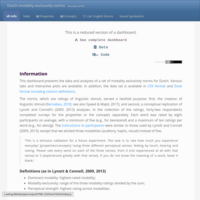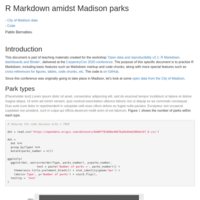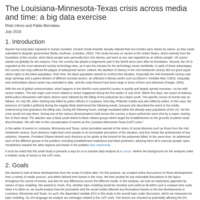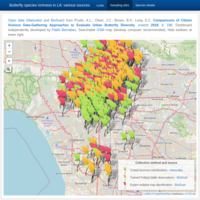Recently Published

Dutch modality exclusivity norms
Part of the toolkit of language researchers is formed of stimuli that have been rated on various dimensions. The current study presents modality exclusivity norms for 336 properties and 411 concepts in Dutch. Forty-two respondents rated the auditory, haptic, and visual strength of these words. Mean scores were then computed, yielding acceptable reliability values. Measures of modality exclusivity and perceptual strength were also computed. Furthermore, the data includes psycholinguistic variables from other corpora, covering length (e.g., number of phonemes), frequency (e.g., contextual diversity), and distinctiveness (e.g., number of orthographic neighbours), along with concreteness and age of acquisition. To test these norms, Lynott and Connell's (2009, 2013) analyses were replicated. First, unimodal, bimodal, and tri-modal words were found. Vision was the most prevalent modality. Vision and touch were relatively related, leaving a more independent auditory modality. Properties were more strongly perceptual than concepts. Last, sound symbolism was investigated using regression, which revealed that auditory strength predicted lexical properties of the words better than the other modalities did, or else with a different direction. All the data and analysis code, including a web application, are available from https://osf.io/brkjw.

R Markdown amidst Madison parks
This document is part of teaching materials created for the CarpentryCon conference. The purpose is to practise R Markdown, including basic features such as Markdown markup and code chunks, along with more special features such as cross-references for figures and tables. The conference was originally going to take place in Madison, so let’s look at some open data from the City of Madison.

The Louisiana-Minnesota-Dallas crisis across media and time: a big data exercise
Racism has long been ingrained in human societies. Ancient Greek Aristotle already claimed that non-Greeks were slaves by nature, as they easily submitted to despotic government (Reilly, Kaufman, & Bodino, 2002). This study focuses on racism in the United States, which extends from the foundation of the country, when black people were generally born into slavery, and were at any rate regarded as an inferior people. US racism stands out globally for two reasons. First, the country has played a hegemonic part in the World since soon after its foundation. Second, the US is regarded as the most advanced society technology-wise, as it sets the minutes for the technology sector worldwide. In spite of these advantages, the country has long suffered the plague of widespread racism. Indeed, the abolition of slavery in the mid-nineteenth century did not grant equal citizen rights to the black population. Over time, the black population started to confront this situation. Especially the mid-nineteenth century saw large uprisings and a patent division of different societal sectors, as reflected in literary works such as Ellison’s ‘Invisible Man’ (1952). Inequality and confrontation about racism has extended to date, and the costs thereof have been large in terms of lives and otherwise (Feagin, 2004). With the era of global communication, what happens in the World’s most powerful country is quickly and largely spread overseas—so too with racism matters. The last major such event related to racism happened during the first weeks of July 2016. Within five days, two cases of dubious, lethal police intervention with black citizens were followed by the killing of five policemen by a black youth. The specific course of events was as follows. On July 5th, Alton Sterling was killed by police officers in Louisiana. Next day, Philando Castile was also killed by police. In this case, the presence of Castile’s girlfriend during the tragedy likely determined the following events, because she described the event to the media, underscoring how gratuitous the killing was. During the following hours, outrage escalated within the already-wary population of the US. Yet the crisis would not stop there. During one of the various demonstrations held across the country, a dozen policemen were shot by a sniper, leaving five of them dead. The attacker was a black youth linked to black militant groups which target the Establishment on the grounds of patent racial discrimination. We will refer to this concatenation of events as the Louisiana-Minnesota-Dallas (LMD) crisis.1 In the welter of events in Louisiana, Minnesota and Dallas, some journalists warned of the return of social divisions such as those from the mid-nineteenth century. Such divisions might lead some people to an incomplete perception of the situation, and thus hinder the achievement of any solutions. However, President Obama denied such divisions as he spoke at the funeral for the policemen killed. At the same time, he addressed each of the different groups in the problem, including Establishment institutions and black protesters, advising them all to exercise greater open-mindedness towards the other aspects and bands in the problem (see statement). It must be noted that this small study is primarily a way for us to practise data analysis at a course. Neither the background nor the analyses make a realistic study of racism or the LMD crisis.

Butterfly species richness in LA: various sources
Open data (iNaturalist and BioScan) from Prudic, K.L.; Oliver, J.C.; Brown, B.V.; Long, E.C. Comparisons of Citizen Science Data-Gathering Approaches to Evaluate Urban Butterfly Diversity. Insects 2018, 9, 186. Dashboard independently developed by Pablo Bernabeu. Searchable OSM map and links to further information available.